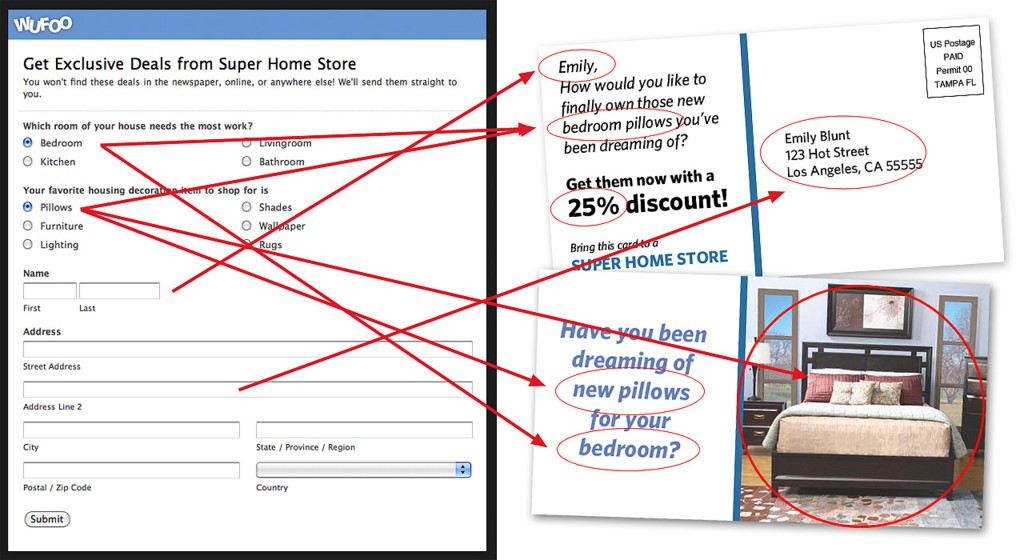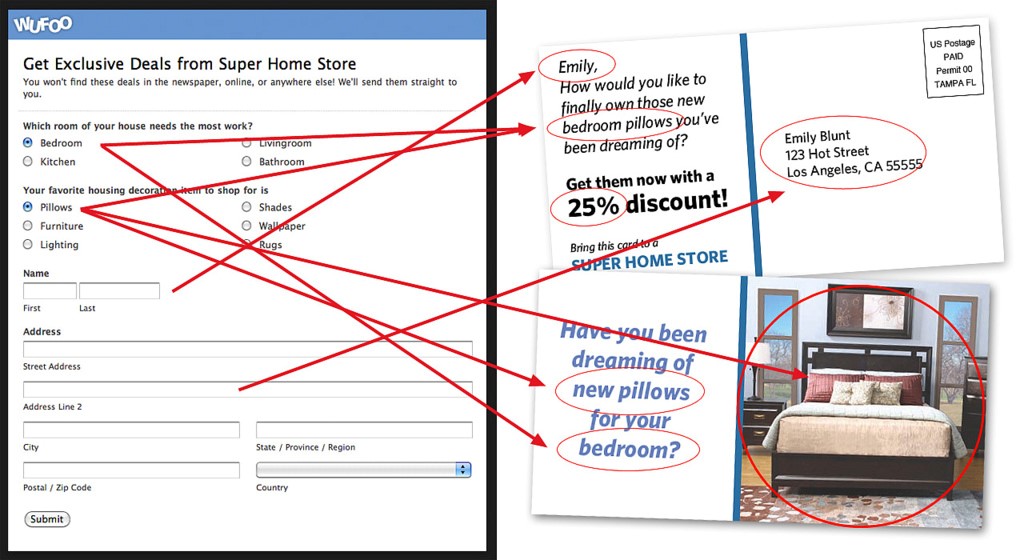Want to really catch the eye of prospective customers? Consider personalized marketing using in-house light production print technology. In other words, having a light production printer in your business gives you the ability to deliver unique messages to each potential customer. This blog post will discuss how that works.
Example of personalized marketing output


Source: https://c1.staticflickr.com/6/5178/5551001505_9cab78c10e_b.jpg
First, what is a light production printer?
Light production printers go beyond the capabilities of office-class printers to deliver faster speeds, higher duty cycles, wider media support, and more finishing options.
Common characteristics of these devices include print speeds of 70 pages per minute or higher, a duty cycle of between 101,000 and 300,000 impressions per month (for a color light production system), and support for heavier paper stocks as well as coated and uncoated stock.
How can light production printers create personalized output?
Light production print technology is capable of variable data printing (VDP), or the ability for visual elements (e.g., text, graphics, images) to be changed from one printed piece to the next without stopping or slowing down the printing process.
With variable data printing, a separate file is created as a text file, database file, or spreadsheet—depending on the particular variable data printing software being used. This file could contain a title, name, address, individualized graphics, prices, and any other specifically targeted message or text that will be inserted into a specified part of the printout.
In most cases, most of the output appears the same (called static elements), but the locations (or fields) slated for variable data differ in appearance.
What are the benefits of personalized marketing material?
Variable data printing provides a number of benefits over completely static marketing material. Individualized and targeted media gives customers the impression that a product or service is specifically aimed at their needs; response rates are generally higher with personalized marketing pieces.
What’s one challenge associated with variable data printing?
One challenge is that businesses must know something about the customer to really take advantage of deep personalization. That data could come from a customer relationship management (CRM) system, or third-party commercial database.
That said, just being able to put a name and address on a mailing piece is still a step ahead of just sticking an address label on a boilerplate mailing piece, brochure, or catalog.
Conclusion
By acquiring light production technology, your organization can create personalized brochures, mailers, and other marketing content via variable data printing. This type of printing can really capture the attention of the customer, helping you boost chances for increasing product awareness and/or generating a sale.
